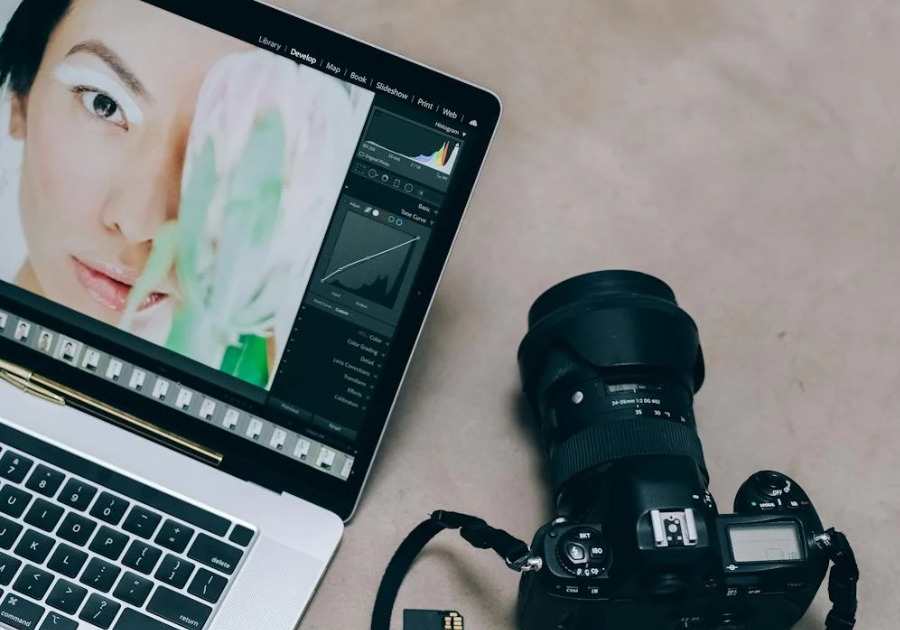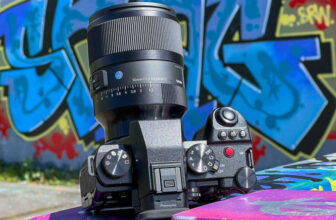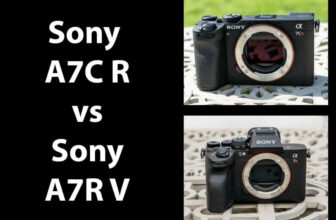
[adinserter block=”1″]
This guide to the best Apple Aperture alternatives for photo editing will help you find the ideal software for your needs.
Aperture is photography management and photo editing software developed by Apple Inc. for its computer operating system, macOS.
This software is quite powerful and has very useful features. However, Apple Inc. has discontinued support for the program.
Now, Apple Aperture users must look for a new solution to organize and edit their photos.
If you’re looking for an Apple Aperture replacement, read on.
What is the Best Apple Aperture Alternative in 2024?
When you enter the world of photography, you’ll need good photo editing software to organize and edit your photos.
Aperture is a great software program for these tasks. It allows you to make slideshows and prepare images for printing, and it has non-destructive editing tools that minimize image compression during editing.
Apple’s program helps you organize photos by keywords, places, and faces. The software uses face recognition technology and GPS metadata embedded in the image files.
Although Aperture is a good piece of software, as you evolve, your needs change, and you end up needing something more complete that allows you to make more complex edits. Not to mention that it’s no longer supported/updated.
I’ve put together a list of Aperture replacements for those who want to take the next step.
Apple Photos (Best Native Photo Editor for the Mac)
- Free
- Intuitive, slick interface
- Face recognition
- Capable auto-corrections
- Plug-in support
- Neat tricks for iOS Live Photos
- Auto-created Memories are not editable
- No chromatic aberration or geometry correction
- Sharing limited to Apple ecosystem
Apple Photos is included free with all Macs and Apple products and is an excellent photo editing application.
Fast and intuitive, Apple Photos includes advanced photo organization and adjustment features and is especially suitable for those who take photos with iPhones.
But the app also allows you to view and edit RAW files from popular SLR cameras, which makes the editing possibilities more powerful.
Anyone with a Mac already has Apple Photos pre-installed and couldn’t remove it even if they wanted to.
Because it comes in Apple products, if you have an entire Apple ecosystem, you’ll have all your devices synchronized, making it easy to transfer files through the cloud storage.
If you’re an amateur photographer, Apple Photos will leave you satisfied with its impressive functionality.
With basic and advanced editing options, as well as famous filters, Apple Photos can be used by amateurs through to professional photographers or those who want to start a more in-depth hobby.
Adobe Lightroom Classic (Best for a Professional Workflow)

Image: dpreview
- Excellent image management and organization
- Auto masking for local adjustments
- Face recognition and geotag map
- Plug-in support
- Connected mobile app
- The most famous and used software among photographers
- Panorama and HDR stitching
- Powerful RAW profiles and filters
- Intelligent search tool
- Earlier presets are still compatible
- Initial RAW conversion is slightly more detailed in some competing products
- Requires subscription
Adobe Lightroom is the most popular editing tool for digital photos on the market. Amateurs and professionals use this software to organize and edit thousands of photos.
Adobe Lightroom is a comprehensive image editing and manipulation software. It’s compatible with macOS, iOS, Windows and Android.
It’s considered one of the best editing applications available for PCs and laptops today. But what is so great about Adobe Lightroom that makes it so popular with photography lovers?
How Much Do You REALLY Know About Photography?! 🤔
Test your photography knowledge with this quick quiz!
See how much you really know about photography…

Ideal for those who work with RAW images, the program is compatible with all file formats from a wide range of brands on the market.
In addition, it exports photos in the most popular online formats, removing the need to convert the file.
Lightroom Classic’s Library mode offers unparalleled organization features, including the option to group photos into Quick Collections of thumbnails selected by you and Smart Collections of photos that meet rating or other criteria.
You can sort your photos by stars, color tags, and flags, giving users more freedom to organize.
Most Lightroom users probably want to develop RAW images, and Adobe Lightroom offers so many possibilities for correcting images.
It allows you to change the image’s white balance during editing and lets you bring out more detail in overexposed and underexposed areas.
If I were to talk about Adobe Lightroom, I’d be here for hours. But one thing I like about it is that it’s constantly being updated.
Now, with the era of artificial intelligence (AI), Adobe has been adding new tools to the software to make the editing process easier for photographers.
The filter system, for example, has been completely modified to have artificial intelligence working in our favor, as well as new tools such as lens blur, which creates a blur in the focus that didn’t exist before.
This is certainly a program that I recommend if you want to work with photography. Especially if you’re working with batch editing!
Darktable (Best Full-Featured Free Aperture Alternative)

Image: darktable.org
- Excellent performance
- Wide range of functionality
- User-friendly design
- Tethered shooting support
- RAW file support from various manufacturers
- As it’s open source, it gets regular updates and fixes
- FREE!
- Confusing editing module groupings
- Could be stronger in managing shadow details
Darktable is a free, open-source photo editing and file management software solution.
Open source is a term used to describe software that has been developed by a community rather than by a company. Members of the community contribute to the development of the software, as well as to its ongoing functionality.
What’s more, it’s not a closed community but an open one that encourages everyone to get involved if they have the necessary skills.
Darktable is a great-looking, robust, powerful, and comprehensive post-processing tool.
At first, you might be confused, thinking you’ve opened Adobe Lightroom, as its layout and appearance are similar.
In terms of functionality, DarkTable works as a non-destructive RAW image editing solution, which means that it makes completely reversible changes to your images.
It features a complete selection of functions and tools designed to suit any level of photographer.
Darktable has many similarities with Adobe Lightroom – most of the functions perform equally well and others stand out, according to some users.
All in all, Darktable is a complete product when it comes to comprehensive editing of digital photos.
Luminar Neo (Best for Easy, AI-Enhanced Photo Editing)

- Affordable one-time price available
- Easy and fun to use
- Effective one-click presets
- Impressive AI tools
- Excellent portrait enhancers
- Fast RAW image imports
- Promising layer-based workflow
- Handy extensions help with specific tasks
- Especially useful as a Lightroom Plugin
- Slow to respond (initially)
- Limited image management features
- Limited print and export options
- Disappointing mobile app
- No GPU acceleration (except Extensions)
- No free trial or student saving
Luminar Neo is a powerful image editor for Mac and Windows that is gaining fans because of its AI technologies, which can simplify complex digital photography editing tasks, making them fast and fun.
The software is available as a subscription or as a one-off purchase.
Neo’s main AI features include the ability to transform a scene, replace the sky, remove power lines and dust spots, and perform various portrait enhancements that will blow your mind, all with just a few clicks.
It’s every photographer’s dream, isn’t it?
The main attraction of Luminar Neo is the possibility for a complete amateur with little experience to perform immensely complex photo editing tasks with just a few clicks, getting incredible photos in the end.
It’s also useful for more experienced photographers who want to save time or experiment with different styles of image editing.
In addition to the program’s signature feature, artificial intelligence, Luminar Neo offers a selection of essential tools that rival other popular image editors.
The software has presets that you can download or buy, which are applied to your image with just one click. The AI also indicates which presets match your photo by recognizing the image, helping you save time.
Digikam (Best Free Image Organizer)

image: DigiKam
- Free to use
- A comprehensive set of editing tools
- Open-source means plenty of updates
- Includes tools to create panoramas
- You can extend its features with various compatible plugins
- It might lag when dealing with a large number of photos
- It may be too complex for beginners
- Lacks more advanced tools found on premium photo management apps
Another excellent photo management application is digiKam, an open-source program that offers many regular updates and features.
If you’re looking for a program that can quickly import and organize a wide variety of photos, digiKam allows users to access a wide range of tools and easily catalog their images – perfect for professional photographers.
The basic sorting tools are all present, including tools for sorting photos by name, date, size, and other attributes, as well as tagging tools for adding labels, ratings, and comments about the photos.
Mylio (Best for Syncing and Backing Up Photos Across Devices)

- Completely private (offline)
- No reliance on Cloud/Internet
- Great way to ‘rediscover’ forgotten photos
- Slick interface
- Easy & fun to use
- Facial recognition is entirely offline
- Excellent map, calendar and people organisation
- Unifies photo libraries across multiple devices/platforms
- Duplicate photo finder helps save space
- Can’t be purchased outright (subscription-only)
- Devices need to be on to sync
- Inaccurate import times (speeds were actually faster!)
- Pricey
- Lacks masks and cloning tools
If you want one of the best photo management apps for Windows, Mac, iOS and Android, Mylio Photos could be what you’re looking for.
Mylio Photos uses local media storage and synchronization between devices to allow you to connect multiple image libraries and access them in one place – all without the Internet or the cloud.
This means that everything stays private – a great advantage for any photographer who doesn’t feel comfortable storing and sharing personal images online.
You can “share” any photos or videos with devices of your choice via your own WiFi connection. As long as the chosen devices are connected and active on the same WiFi network as your device, the apps will synchronize the chosen videos and photos.
With Mylio, as you don’t upload anything, all your data remains completely private, which may interest many in an increasingly online world.
Mylio also helps you find images faster through intelligent organization and search features, as well as offering useful image editing tools.
You won’t find advanced editing tools in this software, but what it does offer is enough for most amateur photographers who need to improve the look of their images.
The software has non-destructive RAW support and can be used on any device.
Mylio works perfectly, regardless of the system you use. If your laptop is a Mac, but your phone is an Android and your tablet runs Windows, you can still use Mylio.
Capture One Pro (Best for Professional Photo Editing Without a Subscription)

Image: dpreview
- Excellent RAW file conversion
- Tethered workflow second to none
- Powerful adjustment tools
- Customizable interface (can be made to look like Lr)
- Layer-based editing
- Powerful color adjustment tools
- Annotations feature useful for teams
- Generous student discount
- New app for iPad available
- License is expensive
- Complicated for beginners
- Lack of 3rd party plugins
- Limited file organization
- Limited online sharing
- No facial recognition
Capture One is a professional-level photo manager with high-quality image processing and tools.
It’s designed to manage images from camera RAW files and allows you to edit them using a long list of tools and adjustments.
With an incredible amount of impressive functionality, it’s one of the best photo organizer systems for cutting-edge tools that allow for color grading and other highly creative image manipulation techniques.
Users can work with layers and adjustment masks to add additional depth of control to their edits.
Capture One includes a selection of styling brushes for more straightforward, Photoshop-like procedures.
It may be too expensive and complicated for amateurs, but professionals looking for the best photo management and editing software will be impressed by the high-quality results.
Picktorial (Best All-in-One Photo Editor for the Mac)

- Good color correction tools
- Non-destructive method of storing edits
- RAW file support
- Sync and backup to photo cloud storage
- Pixel layers aren’t supported
- No RAW photo editing in free version
- Not open source
Another Aperture alternative is Picktorial, a non-destructive image editor that intuitively organizes and enhances photos.
The editor is made exclusively for Mac and replaces Apple’s Aperture.
Picktorial works as both a library and a post-processing platform. Its layout is intuitive and organized, making it easy to edit.
Both the library and the editor tab are in the same window, so you won’t have any trouble moving on to another image.
8 Best Apple Aperture Alternatives for iPhone/Android
- Adobe Photoshop Lightroom
- Snapseed
- VSCO
- Lensa
- Polarr
- ACDSee Photo Studio
- Apple Photos
- Google Photos
Why Was Apple Aperture Discontinued?
Apple decided to discontinue Aperture and iPhoto in favor of consolidating its photo editing and management tools into a single application.
This decision led to the development and release of Apple Photos, a more integrated and streamlined application designed to work seamlessly across all Apple devices.
The move was part of Apple’s strategy to simplify its software offerings and enhance user experience by focusing on a unified platform for photo management.
[adinserter block=”1″]
Credit : Source Post






